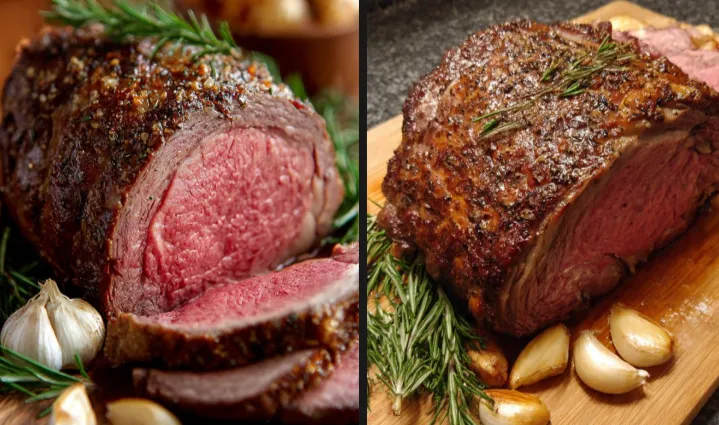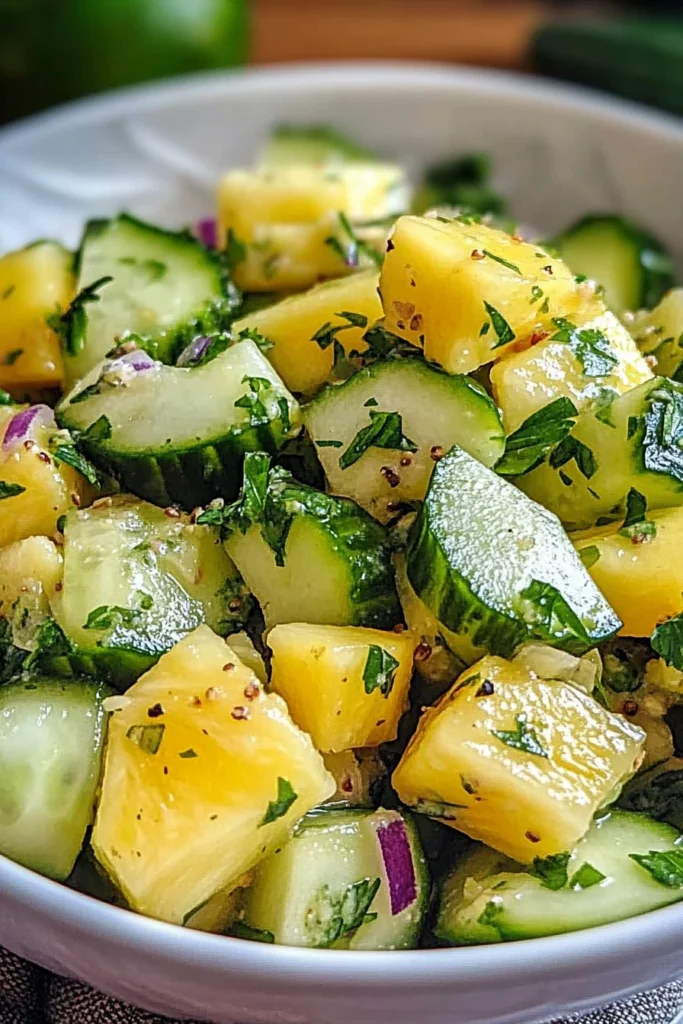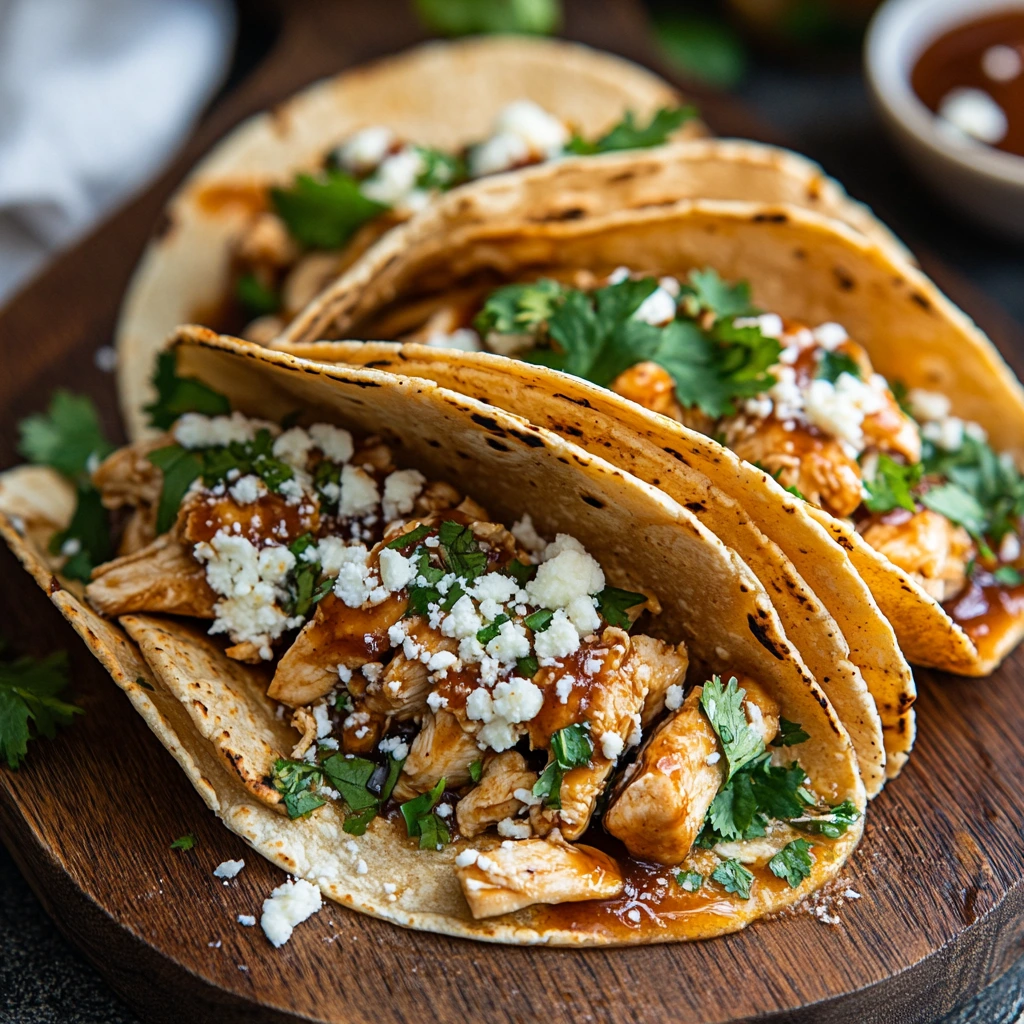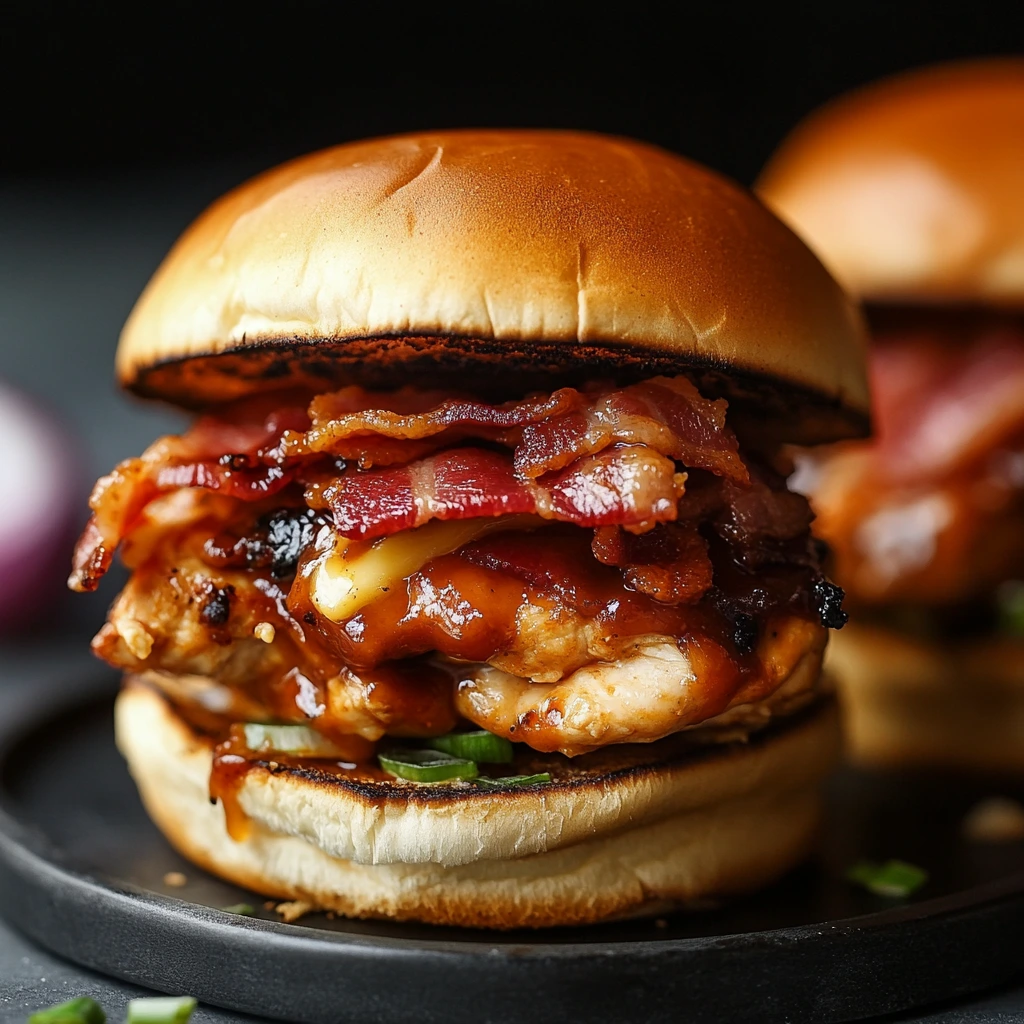A prime rib roast with garlic and rosemary is the ultimate centerpiece for any special occasion. With its rich marbling, tender texture, and deep beef flavor, this roast is a showstopper that never fails to impress. The combination of garlic, rosemary, and butter creates a fragrant crust that locks in the juices and enhances the natural flavor of the beef. Whether served for Christmas, New Year’s Eve, or a celebratory dinner, this recipe delivers restaurant-quality results at home.
The Essence of Prime Rib Roast
Prime rib, also known as standing rib roast, is one of the most luxurious cuts of beef. It’s prized for its tenderness, juiciness, and rich flavor. The key to a perfect roast lies in two things: high-quality meat and proper cooking technique. The garlic and rosemary rub adds a savory, aromatic layer that complements the beef’s natural richness without overpowering it.
This recipe uses a simple yet effective method — searing the roast at high heat to create a golden crust, then roasting it slowly to achieve a tender, evenly cooked interior. The result is a prime rib that’s crisp on the outside, pink and juicy inside, and bursting with flavor.
Why This Prime Rib Roast Is So Special
This roast is special because it combines simplicity with elegance. The ingredients are minimal — just garlic, rosemary, butter, salt, and pepper — but the flavors are bold and balanced. The butter and herbs form a crust that seals in moisture, while the slow roasting process ensures even cooking.
It’s a dish that feels indulgent yet approachable, perfect for both experienced cooks and beginners. The aroma of garlic and rosemary filling the kitchen as the roast cooks is enough to make any gathering feel festive.
Ingredients and Their Roles
Prime rib roast: The star of the dish, ideally bone-in for maximum flavor and juiciness.
Butter: Adds richness and helps the crust brown beautifully.
Garlic: Infuses the roast with deep, savory flavor.
Fresh rosemary: Provides an earthy, aromatic note that pairs perfectly with beef.
Salt and pepper: Essential for seasoning and enhancing the natural flavor of the meat.
Olive oil: Helps the rub adhere and promotes even browning.
Step-by-Step Recipe for Prime Rib Roast with Garlic and Rosemary
Ingredients
- 1 prime rib roast (5–6 lbs / 2.5–3 kg), bone-in or boneless
- 4 tablespoons unsalted butter, softened
- 3 tablespoons olive oil
- 6 cloves garlic, minced
- 2 tablespoons fresh rosemary, finely chopped
- 1 tablespoon fresh thyme leaves (optional)
- 2 teaspoons kosher salt
- 1 teaspoon freshly ground black pepper
Preparation
1. Prepare the roast
- Remove the prime rib from the refrigerator at least 2 hours before cooking to bring it to room temperature.
- Pat the roast dry with paper towels to ensure a crisp crust.
- If using a bone-in roast, cut the bones away from the meat, then tie them back on with kitchen twine. This makes carving easier later.
2. Make the garlic and rosemary butter
- In a small bowl, combine softened butter, olive oil, minced garlic, chopped rosemary, thyme, salt, and pepper.
- Mix until well combined and fragrant.
3. Season the roast
- Rub the garlic and rosemary butter all over the roast, covering every surface.
- Place the roast on a rack in a roasting pan, fat side up.
4. Roast the beef
- Preheat the oven to 230°C (450°F).
- Roast the prime rib for 20 minutes to develop a golden crust.
- Reduce the oven temperature to 160°C (325°F) and continue roasting until the internal temperature reaches:
- 49°C (120°F) for rare
- 54°C (130°F) for medium-rare
- 60°C (140°F) for medium
- Use a meat thermometer for accuracy. Cooking time is approximately 15–20 minutes per pound (30–40 minutes per kg).
5. Rest the roast
- Remove the roast from the oven and tent loosely with foil.
- Let rest for at least 30 minutes before carving. This allows the juices to redistribute, keeping the meat tender and moist.
6. Make the pan sauce (optional)
- Place the roasting pan over medium heat on the stovetop.
- Add 1 cup of beef broth or red wine to deglaze, scraping up the browned bits.
- Simmer for 5 minutes, then strain and serve as a simple jus.
Tips for Perfect Prime Rib Roast
- Use a meat thermometer: Guarantees perfect doneness every time.
- Let the roast rest: Prevents juices from escaping when sliced.
- Start hot, finish slow: Creates a crisp crust and tender interior.
- Use fresh herbs: Dried herbs won’t deliver the same aroma or flavor.
- Don’t over-season: The beef’s natural flavor should shine through.
Variations to Try
Garlic-Herb Crusted Prime Rib
Add Dijon mustard to the butter mixture for a tangy, flavorful crust.
Horseradish Prime Rib
Serve with a creamy horseradish sauce for a classic steakhouse pairing.
Red Wine Prime Rib
Deglaze the pan with red wine and beef stock for a rich, velvety sauce.
Smoked Prime Rib
Cook the roast in a smoker for a deep, smoky flavor that complements the herbs.
Peppercorn-Crusted Prime Rib
Add crushed black peppercorns to the rub for a bold, spicy crust.
Serving Suggestions
Prime rib roast pairs beautifully with classic sides like mashed potatoes, roasted vegetables, Yorkshire pudding, or creamed spinach. For a lighter option, serve with a crisp green salad or roasted asparagus.
For presentation, slice the roast thickly and arrange on a platter with sprigs of rosemary and roasted garlic bulbs. Drizzle with pan juices or serve with a side of au jus for dipping.
Storage and Make-Ahead Tips
- Make-ahead rub: Prepare the garlic and rosemary butter up to 2 days in advance and refrigerate.
- Pre-season the roast: Rub with butter and refrigerate overnight for deeper flavor.
- Leftovers: Store in an airtight container in the refrigerator for up to 4 days.
- Reheating: Warm slices gently in a 150°C (300°F) oven or in a skillet with a splash of broth.
Nutritional Information (per serving)
- Calories: 520–580 kcal
- Protein: 45 g
- Fat: 40 g
- Carbohydrates: 1 g
- Sodium: 600 mg
The History and Inspiration Behind Prime Rib Roast
Prime rib has long been a symbol of luxury and celebration. Originating from the rib section of the cow, it’s one of the most tender and flavorful cuts of beef. In traditional English cuisine, it was often served as the centerpiece of Sunday roasts and festive dinners.
The addition of garlic and rosemary brings a Mediterranean touch to this classic dish, enhancing its natural richness with aromatic herbs and savory depth. Today, prime rib remains a favorite for holidays and special occasions, representing comfort, abundance, and culinary craftsmanship.
The Texture and Flavor Profile
The perfect prime rib roast has a crisp, golden crust that gives way to tender, juicy meat inside. The marbling of fat throughout the beef melts during roasting, basting the meat from within. The garlic and rosemary infuse the roast with earthy, aromatic notes, while the butter adds a luxurious mouthfeel.
Each bite is a balance of textures — the crunch of the crust, the tenderness of the meat, and the richness of the juices.
Troubleshooting Common Issues
Overcooked roast: Always use a thermometer and remove the roast 5°C (10°F) before your target temperature — it will continue to cook while resting.
Pale crust: Start with a high-heat sear to develop color.
Dry meat: Don’t skip the resting period; it’s essential for moisture retention.
Uneven cooking: Bring the roast to room temperature before cooking.
Too salty: Use unsalted butter and season gradually.
Chef’s Tips for Professional Results
- Choose a well-marbled roast: Fat equals flavor and tenderness.
- Use a roasting rack: Allows air circulation for even cooking.
- Let the butter soften naturally: Ensures smooth spreading.
- Slice against the grain: Keeps the meat tender.
- Serve warm plates: Helps maintain the roast’s temperature at the table.
Pairing Ideas
- With Beverages: Pair with Cabernet Sauvignon, Merlot, or Syrah.
- With Sides: Serve with garlic mashed potatoes, roasted root vegetables, or green beans almondine.
- With Sauces: Complement with red wine jus, creamy horseradish sauce, or béarnaise.
The Joy of Roasting Prime Rib
Roasting a prime rib is an experience that combines anticipation, aroma, and artistry. The sizzle of butter, the scent of garlic and rosemary, and the sight of a perfectly browned crust create a sense of celebration. It’s a dish that brings people together, turning any meal into a memorable occasion.
The process is simple yet rewarding — a reminder that great cooking doesn’t require complexity, only care and attention to detail.
How to Carve Prime Rib Like a Pro
- Place the rested roast on a cutting board.
- Remove the kitchen twine and separate the bones if tied.
- Slice the meat across the grain into thick, even slices.
- Arrange on a platter and drizzle with pan juices.
The Science Behind a Perfect Roast
The secret to a perfect prime rib lies in temperature control. Starting at high heat caramelizes the surface, creating a flavorful crust through the Maillard reaction. Lowering the temperature afterward allows the interior to cook gently, preserving tenderness and juiciness.
Resting the roast is equally important — it allows the muscle fibers to relax and reabsorb the juices, ensuring every slice is moist and flavorful.
Presentation and Garnishing
For an elegant presentation, serve the roast on a large platter garnished with fresh rosemary sprigs, roasted garlic bulbs, and a drizzle of jus. Add roasted vegetables or potatoes around the edges for a complete, visually stunning centerpiece.
The Perfect Holiday Centerpiece
A prime rib roast with garlic and rosemary is more than a meal — it’s a statement of celebration and craftsmanship. Its aroma fills the room, its flavor satisfies every palate, and its appearance commands attention. Whether served at a holiday feast or a special dinner, it embodies the essence of fine dining at home.
Conclusion
Prime rib roast with garlic and rosemary is the ultimate expression of elegance and flavor. With its golden crust, tender interior, and aromatic herbs, it’s a dish that transforms any occasion into a celebration. The combination of butter, garlic, and rosemary enhances the natural richness of the beef, creating a roast that’s both simple and sophisticated.
Whether served for Christmas, New Year’s, or a family gathering, this recipe guarantees a show-stopping centerpiece that delights every guest. Juicy, flavorful, and perfectly seasoned — it’s the kind of dish that turns a meal into a memory.







